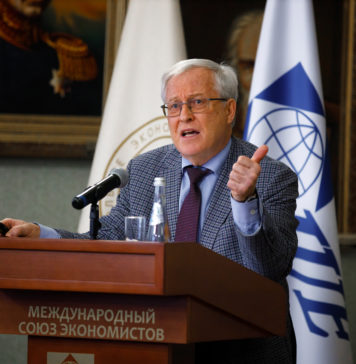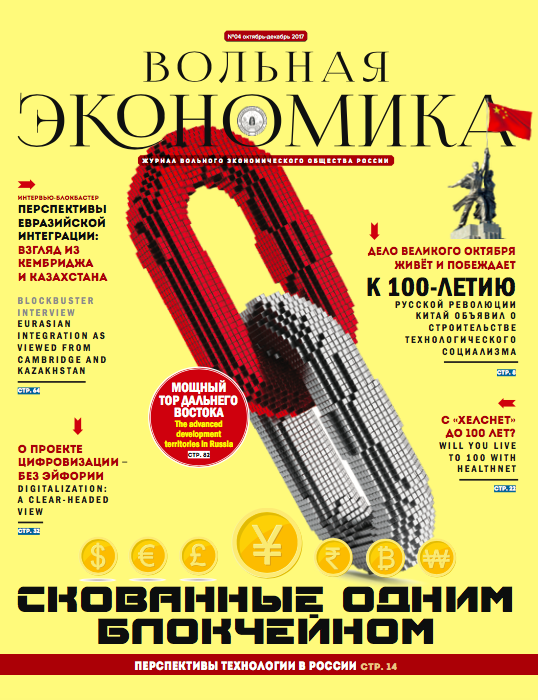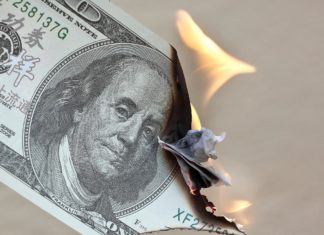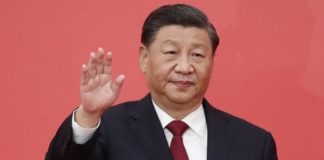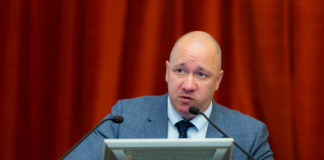Excerpts from the Trade and development report 2020 by UNCTAD
Presented by Igor Paunovic, Senior Economic Officer, UNCTAD in Moscow at headquarters of International Union of Economists, September 22, 2020
The future is not what it used to be
The world economy is experiencing a deep recession amid a still unchecked pandemic. Now is the time to hammer out a plan for global recovery, one that can credibly return even the most vulnerable countries to a stronger position than they were before. The status quo ante, is a goal not worth the name. And the task is urgent, for right now, history is repeating itself, this time with a disturbing mix of both tragedy and farce. Ten years ago, the world’s major economies vowed to bounce back from the worst financial crisis since the Great Depression and struck a tone that suggested a readiness to recast the international order in a manner inspired by the people who led the march out of war and ruin after 1945. In April 2009, leaders of the G20 gathered in London to agree a collective response to the global financial crisis that had ambushed leaders from Tokyo to Washington and Beijing to Buenos Aires. The plan agreed in London was bold: restore confidence, growth, and jobs; repair the financial system to restart lending; strengthen financial regulation to rebuild trust; fund and reform international financial institutions to help overcome this crisis and prevent future ones; promote global trade and investment and reject protectionism; and forge an inclusive, environmentally sustainable recovery. But it didn’t happen. Or, rather, it was honoured more in the breach than the observance: trillions of dollars were spent on repairing the financial system but with little contrition on the part of bankers for past misdeeds or accountability, either in the form of prosecutions or serious reform; new free trade agreements took shape but with no 2 acknowledgement that previous agreements had contributed to a more unequal and fragile world; Europe and the United States turned toward “structural reforms” and austerity on the false premise that too much regulation and a bloated public sector would restrain future growth. The result was a self-reinforcing cycle of weak aggregate demand, tepid growth and widening inequality. Now another crisis, in the form of a microscopic pathogen that rapidly made its way around the world, is throwing into sharp relief the shortcomings of the global economy and its stewardship. In March this year, with Covid-19 contagion becoming a full-blown pandemic and the death toll rising, governments across the world opted for a policy-induced economic coma – stopping the human interactions that define much of commercial life – to prevent new infections and relieve overburdened health systems. This Great Lockdown, as the IMF calls it, has tipped the global economy into recession in 2020 on a scale not witnessed since the 1930s. Massive relief packages have been adopted, particularly by advanced economies, and the medical community has come together in search of a vaccine. Still uncertainty abounds and anxiety persists. Additional waves of infection and death cannot be ruled out. The overall employment impact this year from the combination of lockdown, temporary relief and return to work is difficult to gauge. Still, the ILO estimates that more than 500 million jobs worldwide have been put in jeopardy by the crisis mainly in the developing world, and while many jobs will return with the end of workplace closures, some will be permanently lost; at least 100 million jobs will have gone entirely by year end. Furthermore, between 90 million and 120 million people will be pushed into extreme poverty in the developing world, with hunger and malnutrition certain to follow, while income gaps will widen everywhere. These developments point toward a massive uptick in sickness and death. Hope of a rapid economic bounce-back from a scientific breakthrough – in the form of an effective and widely available vaccine – cannot blind us to other man-made dangers ahead. If governments opt for premature fiscal tightening in an attempt to bring down public debt and businesses adopt an aggressive cost-cutting strategy in an attempt to boost exports, the recovery will likely fizzle out, with a double-dip recession a real possibility in many countries in 2022.
Look back in anger
The recovery from the global financial crisis was sluggish by historical standards and unbalanced between households (with those at the very top grabbing a disproportionately large share of the increased income), firms (with large corporations raising their share of profits often at the expense of smaller business) and regions (with large metropolitan areas pulling further ahead).
Policy did not leave people behind so much as it picked who wins and who loses. Monetary policy, more by default than design, took the lead in orchestrating recovery, and rising equity and other asset prices were taken as a measure of success and a distraction from lagging wage growth and growing inequality. Government spending did increase, but the programmes targeted large firms and financial institutions, not workers, homeowners and local communities. And once tax breaks, bailouts and cheap money had helped calm market nerves, calls for fiscal rectitude grew ever louder; a swift turn to austerity combined with “structural reforms” – often little more than a euphemism for weakening social safety nets and keeping wages in check – extinguished hopes of a demand-led growth strategy that would lead to a sustainable medium- to longer-term recovery of jobs and incomes.
While the withdrawal of fiscal stimulus adversely impacted growth, the continuation of quantitative easing and low interest rates propelled asset prices ever higher. At the same time, a combination of corporate rentseeking and cheap credit, in the context of weak demand, reinforced a culture of quick financial returns, with private equity, outsourcing, share buy-backs and mergers and acquisitions the instruments of choice; to take a startling example, between 2010–2019, S&P 500 companies channelled almost a trillion dollars a year in to share buy backs and dividend payments. With central banks in advanced economies sticking to an easy money policy, tighter financial conditions in developing countries opened up new investment opportunities for those with access to liquid resources and an appetite for risk.
This global search for a return on invested capital has led to a rapid build-up of foreign currency denominated public and private debt in many developing countries, along with increased penetration of their financial markets by non-resident investors, foreign banks, and other more shadowy financial institutions. The greater presence of foreigners in bond and equity markets, moreover, increased the potential instability of exchange rates and further exposed domestic financial markets to the vagaries of global risk appetite and liquidity conditions. The coexistence of bubbles of financial exuberance with inadequate demand for goods and non-financial services, weak investment and lagging productivity constrained growth everywhere.
The world did not prepare for the Covid-19 pandemic as well as it could have, and the ethos that informed the response to the Global Financial Crisis has something to do with that failure.
Opening up to another lost decade
The global economy had entered dangerous waters by late 2019. Growth was slowing across all regions with a number of economies contracting in the final quarter. Still, there was a widely shared expectation that things would improve in 2020, led by an expected rebound in the large emerging economies, with global growth returning to its long run potential in 2021. Even with contagion from Covid-19 picking up pace, G20 finance ministers meeting in Riyadh in the last weekend of February, were still sounding an optimistic note on global economic prospects. Lockdown has parachuted economists into unfamiliar territory.
The current situation is not like a war economy where a switch to military spending sees output expand. Nor is it a traditional global supply-side shock where inflationary pressure is the big challenge for policy makers. Nor do we face a financial crisis where the banking sector is in the eye of the storm. In a global health crisis, putting lives before profits has triggered a series of simultaneous and mutually reinforcing supply, demand and financial shocks. In the wake of these shocks the global economy will contract by an estimated 4.3 per cent this year, leaving global output by year’s end over $6 trillion short (in current US dollars) of what economists had expected it to be before the Covid-19 pathogen began to spread.
In short, the world is grappling with the equivalent of a complete wipeout of the Brazilian, Indian and Mexican economies. And as domestic 9 activity contracts, so goes the international economy; trade will shrink by around one fifth this year, foreign direct investment flows by up to 40 per cent and remittances will drop by over $100 billion. The biggest falls in output will be in the developed world, with some likely to register a double-digit decline. But the greatest economic and social damage will be in the developing world where levels of informality are high, there is continued reliance on a few commodities or tourism as a source of foreign exchange, and fiscal and policy space is limited.
A full V-shaped recovery – the best-case scenario under the circumstances – with annual growth next year above 5 per cent and the world economy returning to its 2019 level by end of 2021 10 is what many are hoping for. However, even this outcome would leave a $12 trillion income shortfall in its wake and an engorged debt burden, particularly in the public sector. Our own assessment also sees the bounce continuing into next year albeit with stronger headwinds weakening the pace of global recovery which will, under the best scenario, struggle to climb far above 4 per cent.
The great escape, part 1: embrace bold ideas
Avoiding a lost decade will require governments, particularly in the advanced countries, to stick to deficits for several years ahead. A commitment to full employment in advanced economies and a targeted reduction in informal employment in developing countries should act as measures of policy ambition and success. A big public investment push will be needed with a variety of supportive policies used to complement expansionary measures including job guarantees and public works programmes. Tying these measures to a low-carbon future should be a given.
Central banks have, since the last crisis, moved away from a singular focus on inflation targeting into wide-ranging fire-fighting. This approach has continued in the current crisis with their direct lending to the private sector. Credit management will also need to get more nuanced; in terms of recovery, where possible, the real interest rate should be pushed further into negative territory, a measure that effectively cancels part of the principal of debt and, through this, stimulate firms, individuals and the government to borrow and spend. Central banks will also need to reassert their regulatory authority, including over the shadow banking system, to tame boom-bust credit cycles and broaden their financial risk horizon to include threats, such as climate change, from outside the financial system itself.
However, there is more to recovering better than getting macroeconomic policy right. Governments have broken important political taboos – debt in Germany, for example, but also tentative quantitative easing in some emerging economies – to keep things going during the lockdown and that same attitude will need to persist into the recovery and rebuilding stages. A focus on raising productivity growth will require various 20 industrial and innovation policies, including more collaborative projects; as the response to develop a vaccine for Covid-19 demonstrates international cooperation can pay big dividends.
But incomes policies that tie wages more closely to productivity and target, in particular, a boost to low incomes and active labour market policies that support job mobility can also be designed to boost productivity levels.
Again, the need to make fighting climate change an intrinsic design feature of these measures needs little justification.
Intrusive trade rules, promoted under the banner of “deep integration”, are a threat to recovery. A temporary “Peace Clause” in the WTO and in the FTAs on pandemic-related government actions would enable countries to quickly adopt and use emergency measures to overcome intellectual property, data, and informational barriers.
Measures that successfully raise wages will automatically boost tax revenues but even a small change in higher income and corporate tax brackets can generate significant gains, not only in advanced economies. In light of the further increase in inequality resulting from this crisis the case for a wealth tax seems irrefutable. Still, the timing of changes in tax codes will be important and should reflect local circumstances.
To enhance the effectiveness of these domestic policies, capital-account management should be kept out of the purview of regional and bilateral trade and investment agreements. Moreover, capital controls will be most effective if capital flows are controlled at both ends, i.e. in both sending and receiving countries.
The great escape, part 2: reform the global architecture
Anti-trust measures are now very much on the agenda at the national and regional levels. But existing multilateral agreements such as the UN`s Equitable Principles and Rules for the Control of Restrictive Business Practices adopted by the General Assembly in 1980, should be strengthened and operationalised with appropriate institutional support such as a global competition authority.
Additional actions, made more urgent by the current crisis, regarding the price gauging, patent abuse and other anti-competitive practices of pharmaceutical giants and digital platforms, are warranted to ensure the recovery is both fair and resilient. Clamping down on corporate tax avoidance and evasion and other forms of illicit financial flows can help both to expand fiscal space and address the inequality challenge. Recent estimates suggest that revenue losses, caused by tax-motivated illicit financial flows (IFFs) alone, are in the range of $49-$193 billion, accounting for 2.3 per cent of combined GDPs, respectively, in Latin America and the Caribbean and in Africa.
Multilateral efforts towards reforming international corporate taxation require new energy, beginning with a much more concerted effort to clamp down on tax havens in the North, establishing a global asset registry to enable wealth taxes on the super-rich and moving to a unitary taxation system that recognizes that the profits of international corporations are generated collectively at the group level.
Sustainable financing will require vibrant public financing options. At the international level, that means boosting the lending capacity of multilateral development banks. In return, these institutions should reassess their policy conditionalities in line with a more sustainable and inclusive development agenda. At the national and regional level, public and development banks also need more support, with governments wholehearted in their mandates and allowing their banks to lend beyond the extremely narrow parameters of triple-A ratings by the world’s big rating agencies.
A Marshall Plan for global health recovery could provide a more dedicated framework for building future resilience. But it should take its namesake seriously. In the first place that means being generous. If 24 the donor community met the 0.7% Official Development Assistance (ODA) target for the next two years that would generate something in the order of $380bn above current commitments. An additional $220bn mobilised by the network of multilateral and regional financing institutions could complete a $600bn support package over the next 18 to 20 months. The money should be dispersed largely as grants but with some room for zero interest loans, the precise mixture determined as the emergency response evolves.
Much like the original, a central financing and oversight agency linked to national public agencies through a regional coordination mechanism remains a model to follow. Finally, a global sovereign debt authority, independent of either (institutional or private) creditor or debtor interests, should be established to address the manifold flaws in the current handling of sovereign debt restructurings. At a minimum, such an authority should provide coherent frameworks and guidelines to facilitate automatic and comprehensive temporary standstills in recognised disaster situations, ensure that long-term developmental needs, including meeting the 2030 Agenda, are systematically taken into account in debt sustainability assessments, and provide an independent forum for expert advice to governments requesting this.


